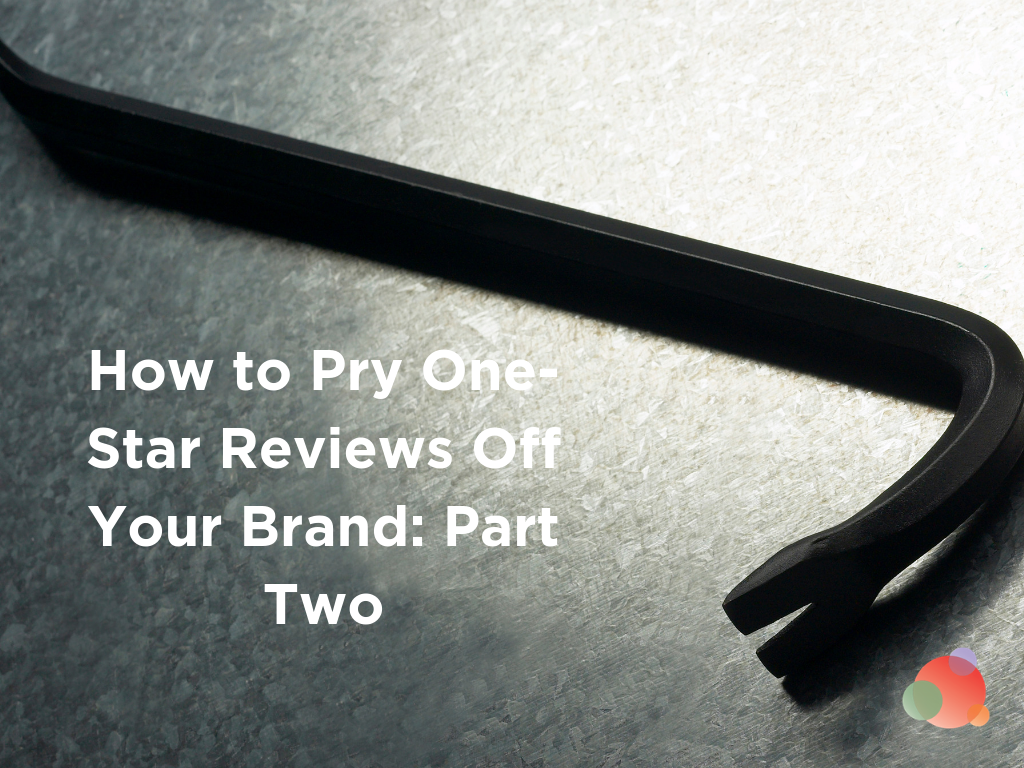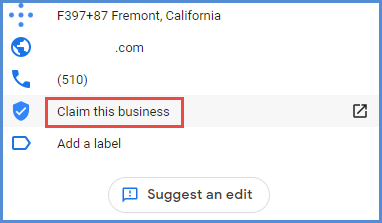 Grab your crowbars!
Grab your crowbars!
It’s time to pry those business-sucking “leech” reviews away.
In part one, we talked about negative one-star reviews and the damage they do to organizations.
Leech reviews affect your prospective audience’s perceptions of your business, and could discourage them from ever contacting you.
No business is safe.
Especially when competitors and angry customers can use the review system against you.
Don’t despair!
You can do something about leech reviews.
Grab some coffee (or tea, if you’re like me), and settle in.
We’re going to show you everything you need to know:
- How to find those pesky leeches
- How to respond to them
- And how to keep them away
How to Find One-Star Leech Reviews Online
People leave reviews all across the Web on sites like Yelp, G2Crowd, local search listings, and even Google.
To find one-star reviews about your business, you just need to search.
Check review websites and search engines for your company’s name. (We do this quarterly, both internally, and for SEO customers.)
Here’s a jumpstart.
You’ll find reviews at any of these sources:
- Social media including Facebook, Instagram, Twitter, LinkedIn, YouTube, etc.
- Local search listings like Google My Business and Bing Places
- Review sites like Yelp, TripAdvisor, and G2Crowd
- Important note—Yelp feeds its reviews into the Bing, Yahoo, and DuckDuckGo search engines
- The Better Business Bureau and Ripoff Report
- Employee sites such as Glassdoor
- Google itself
Now, let’s say you found a few nasty little leeches clinging to your brand name.
Track Reviews So You Know What Customers are Thinking
Collect every website where you found reviews on your business and put them into a spreadsheet.
Include the URL where the site stores reviews, last date checked, number of total reviews, date of the latest review, and the average rating.
This makes tracking reviews easier, later on.
If you have profiles claimed and set up on those sites, you should get alerts when someone posts a review.
That makes it easier to respond.
What’s that?
You don’t have those profiles set up?
Well, here’s how to do it.
Go to the website in question.
I’ll use Google My Business as an example.
Look for a “Claim This Business” or “Is this your business?” link. Click it.

You’ll be asked to create a profile or new account.
Follow the steps to enter your contact information, photos of the business, etc.
You’ll likely have to verify that you’re the business owner (or an authorized representative).
This takes the form of a phone call, postcard, or automated process.
Again, follow the suggested steps.
Fair warning, sometimes the verification process takes a while.
Like a month kind of while.
Once you’ve verified, you have full access to your profile.
Use it to correct any inaccurate contact or business information, and set up email alerts when someone posts a review.
Now we tackle those reviews!
How to Respond to Negative Online Reviews
If you have negative leech reviews, here’s how you can go about removing them.
Do these in the following order!
First and most important, answer this question: Is the review legitimate (coming from a real customer)?
If so, reach out to the customer directly and see if you can fix the problem.
Since they can review and you cannot, making them happy can spur them to delete the negative review, or adjust the rating.
(If you’re not sure it’s a customer, check your CRM database.)
Second, if the review is NOT legitimate, report it to the channel’s support staff (e.g., Yelp, Google, Facebook, etc.).
You can’t take down reviews, but they can.
We had this happen to us four years back.
Two one-star reviews appeared for our business, one in Google and one on Facebook.
The reviews were both posted by individuals based in India.
Both reviews were nearly identical (only one word different!).
To top it off, both of the reviewers’ profiles linked to the same web design agency.
We’d never worked with the agency, even though both claimed we did.
We concluded that the agency had put up phony reviews designed to hurt our business and steal customers.
We reported them, and both vanished a few days later.
Third, if the review is legitimate and the customer won’t take it down, respond to the review with an apology and explanation.
Be genuine in your apology.
Nothing rubs salt in the wound like a fake apology everyone can see.
FAKE APOLOGY: “Janice, I’m sorry you feel that way. At XYZ Corp, we strive to make every customer experience perfect in every way. Our customers have continually rated us at 5 stars since we opened in 2003.”
GENUINE APOLOGY: “Janice, I’m sorry you had a bad experience with us. Could we connect offline? I’d like to make it up to you if that’s at all possible.”
When you connect, explain the circumstances in brief.
This way, you identify that you’re human too, and you’re committed to doing better.
How to Encourage More Positive Reviews
You’ve found and tackled leech reviews.
Your brand name looks much better now, out there in the vast expanse of the web.
What’s next?
Simple…you solicit MORE reviews!
“Wait, what?! We just spent all that time fending off negative reviews. Why would we risk getting more?”
Let me tell you a secret advantage to getting more reviews.
Newer reviews show up first in search results.
They push older reviews down…and out of sight.
How often do you search for something in Google, and click all the way down to page eight in the search results?
Never.
All the results down on page eight languish there, un-viewed, invisible to everyone.
The same thing happens with reviews.
Now you get it, right?
Tips to Encourage Positive Reviews
This is how to encourage positive reviews:
- Correct any customer service issues: Reviews can tell you how well your team’s doing on customer service. If you keep seeing bad reviews on service, talk to your team, pronto! Something needs fixing.
- Make sure you have great content available on your website.
- Thank those who leave positive reviews.
- Make it easy for customers to leave good reviews: If you have a storefront, post a sign reminding customers that you have good reviews on Site X.
- Yelp does not like you soliciting reviews, so maybe avoid encouraging people on that particular channel.
Add Review Management to Your Marketing—It’s Important
Now that we know how to find those leech reviews, pry them off your brand before they suck away business, and keep them at bay with excellent service and more positive reviews.
The initial clean-up will take the most time.
Once you have alerts set up and accounts claimed though, you can maintain your reviews with only a few hours a quarter.
Your brand will thank you…as will your revenue!
How do you manage negative reviews? Share your comments below.